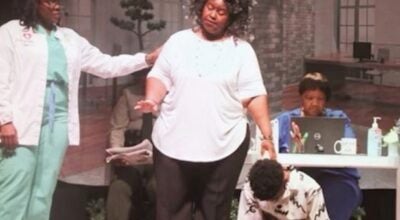Keller: Time in U.S. Navy started to shape integration experience
Published 12:02 am Wednesday, July 15, 2015
This is the third article in the series about my experiences during segregation and later integration.
Leaving my home in Reserve in January of 1953, after enlisting in the U.S. Navy, I wasn’t prepared for the cultural shock.
I was only 18 years old and on my first flight to San Diego for basic training. I was leaving Louisiana for the first time.
My company of 60 men was all white. Coming from a segregated Louisiana, I didn’t find that unusual. After 12 weeks of training, I was assigned to a destroyer — the USS Saufley EDDE. This was my first experience with that I refer to now as light integration.
With a crew of 250 men, we had approximately 20 black men.
I experienced what I call selective segregation, because most of the black men were designated steward mates. Their duties were to cook, serve and take care of the all-white officers and their living quarters.
We had integrated sleeping and eating areas.
We also had recreation with teams that participated in the Navy base softball and basketball leagues. I was a member of the softball team, which was all white. Loving basketball, I was the only white person on the team.
I still think of the fun I had with Byers from Alabama and Curry from New York.
The ship’s home port was Key West, Fla. We cruised up and down the East Coast, visiting Charleston, S.C., Norfolk, Va., Boston, New York, Rhode Island and Connecticut.
We also spent time in Cuba (before Castro), the Virgin Islands, Nassau and Bermuda. With those visits, I experienced what integration was supposed to be.
I was discharged in January of 1957 and returned to what was still segregated Louisiana. I attended an all-white junior college in Mississippi and quit to get married.
I worked at Kaiser Aluminum for a short time. I then started working for a small insurance company that sold only to white people.
I was later offered a job with the Metropolitan Life Insurance Company of New York.
In 1963, I was challenged to run for the State Legislature. Against my wife’s better judgment, I ran, and to my surprise, won. All the elected state officials were white, as were the officials in St. John Parish.
I began serving in an all-white State Legislature, but wasn’t a very effective public official. The bottom line is that I was unprepared for the responsibilities this office demanded.
Next week — The Civil Rights Movement.
If you have any questions, or comments, please write to Get High on Life, P.O. Drawer U, Reserve, LA 70084, call 985-652-8477 or e-mail hkeller@comcast.net.





